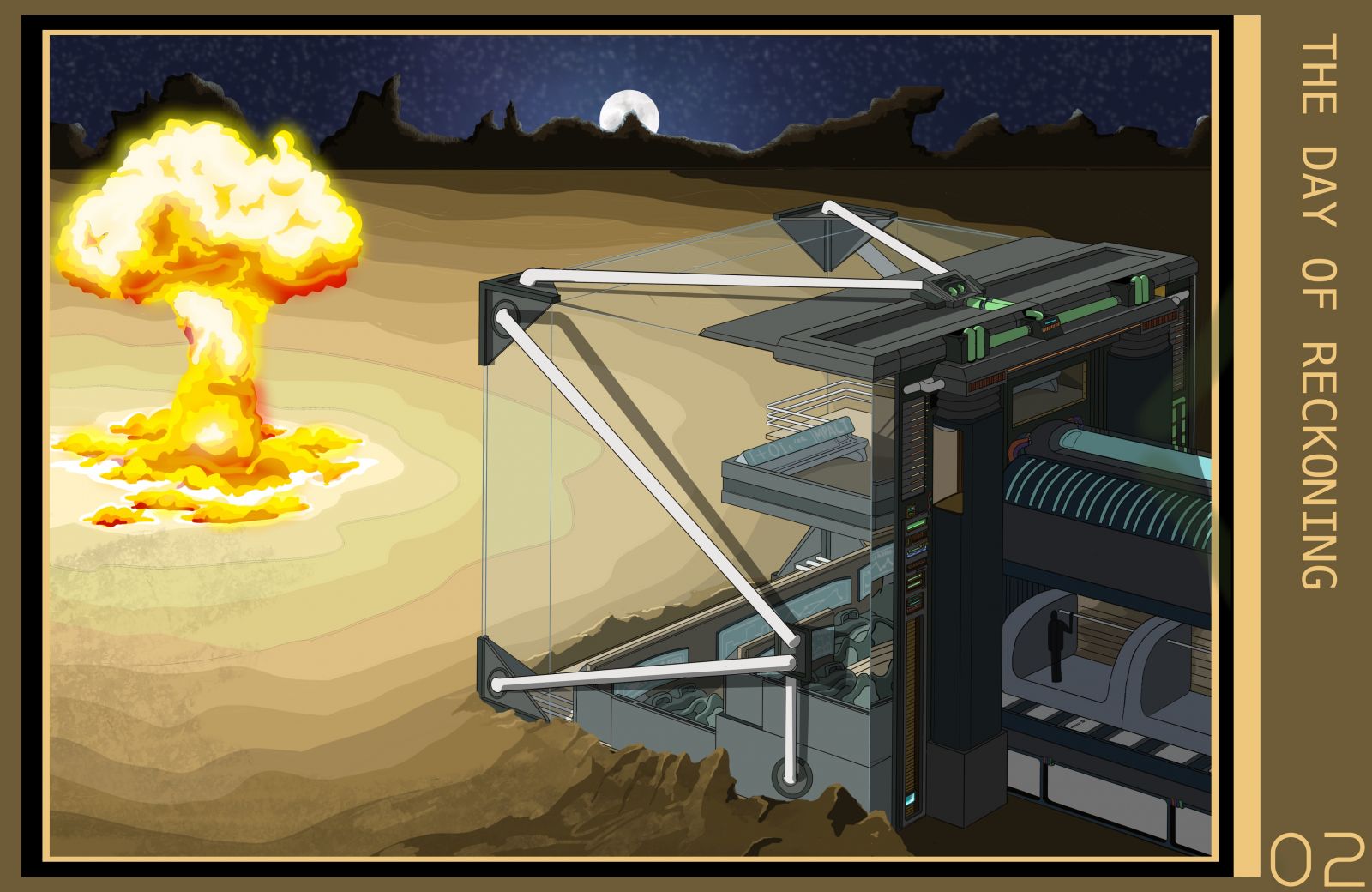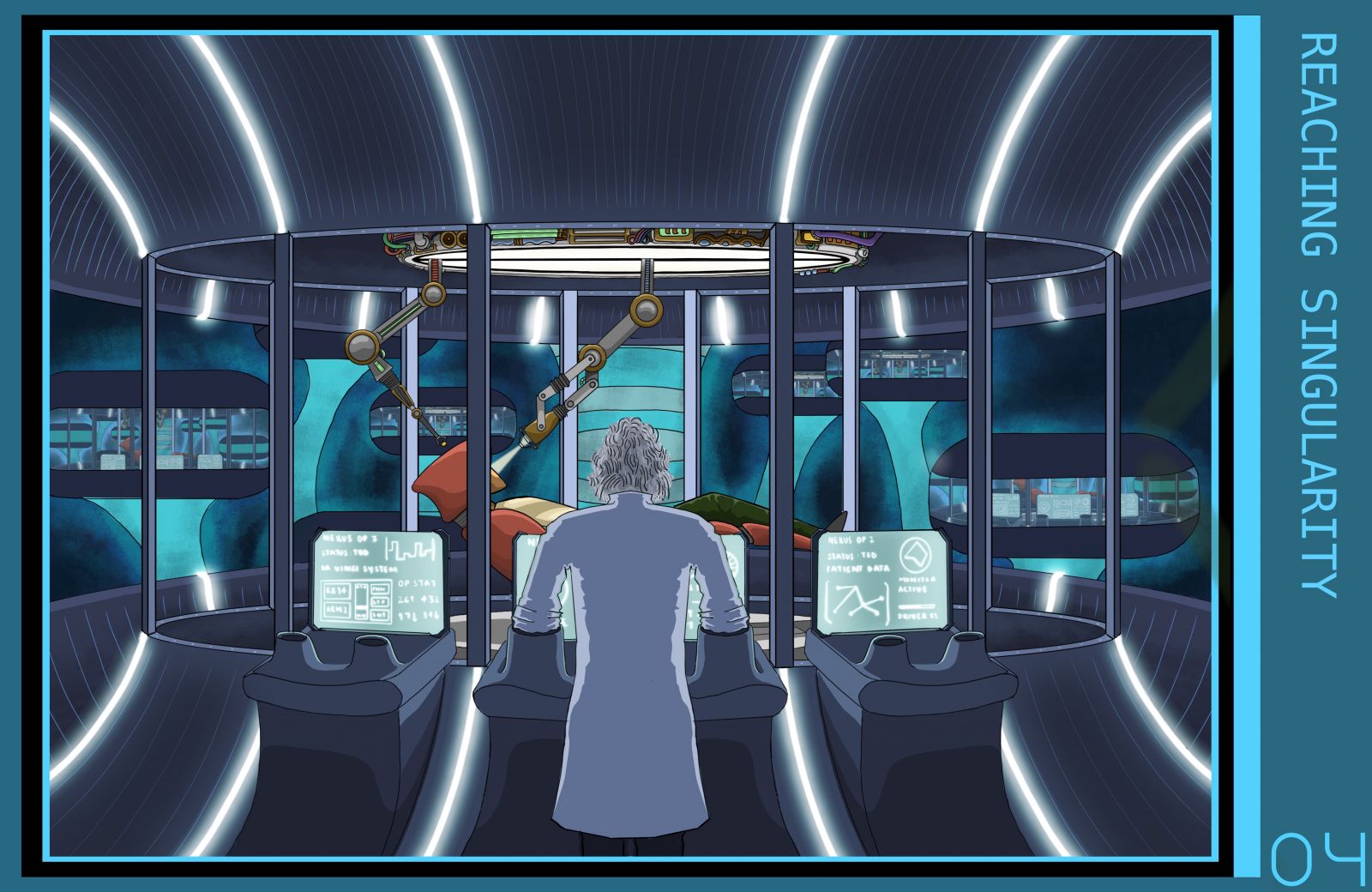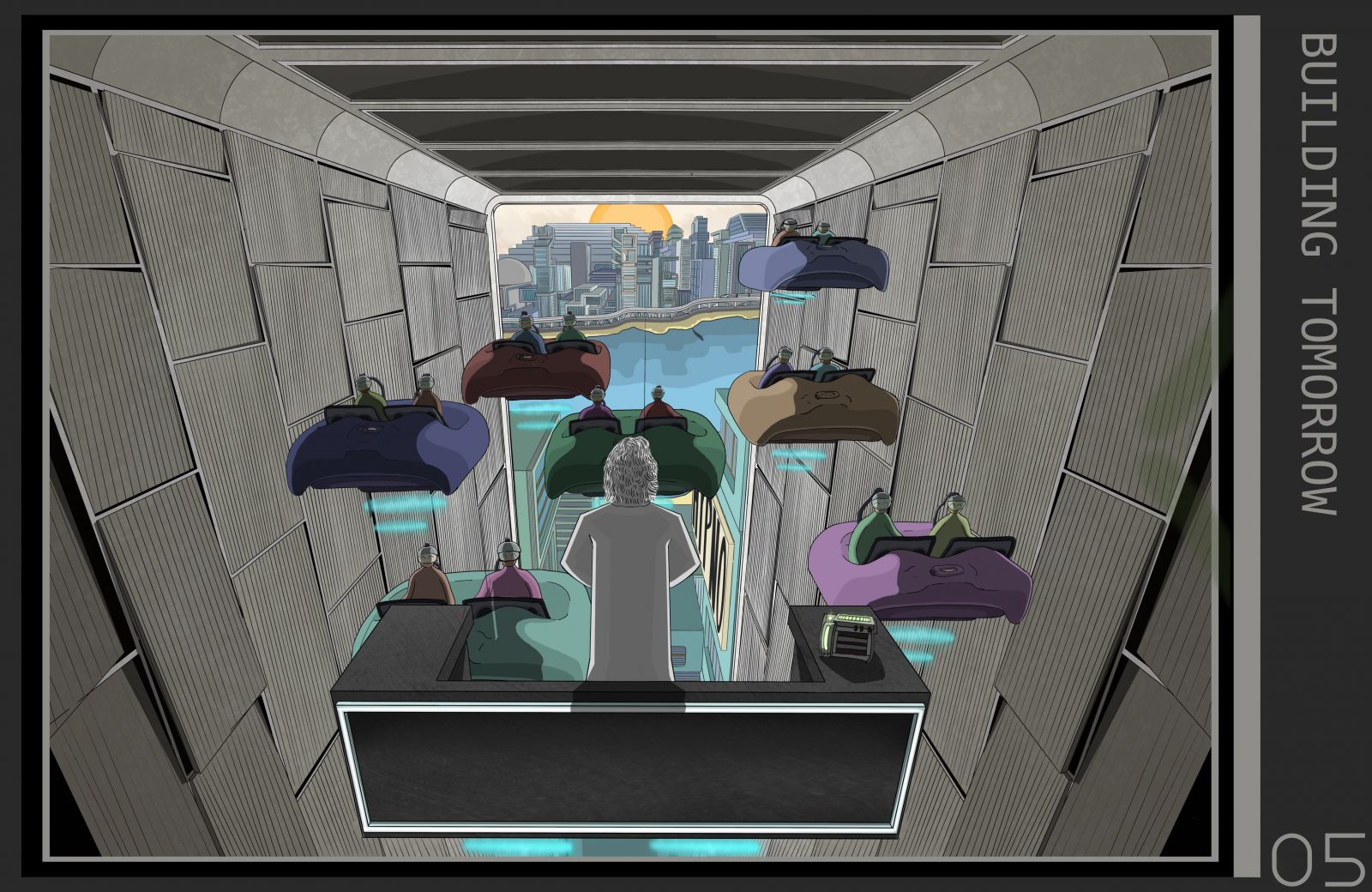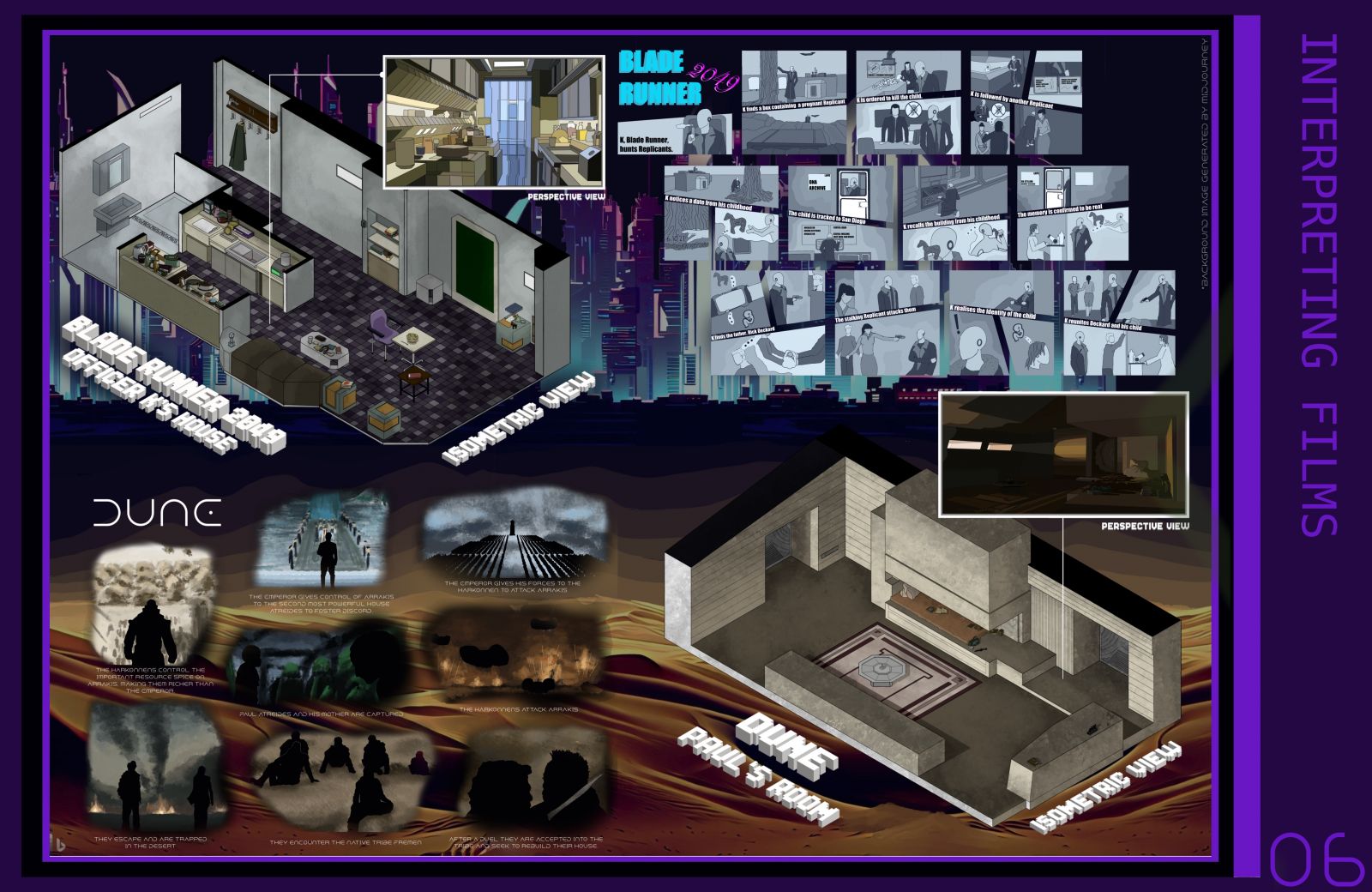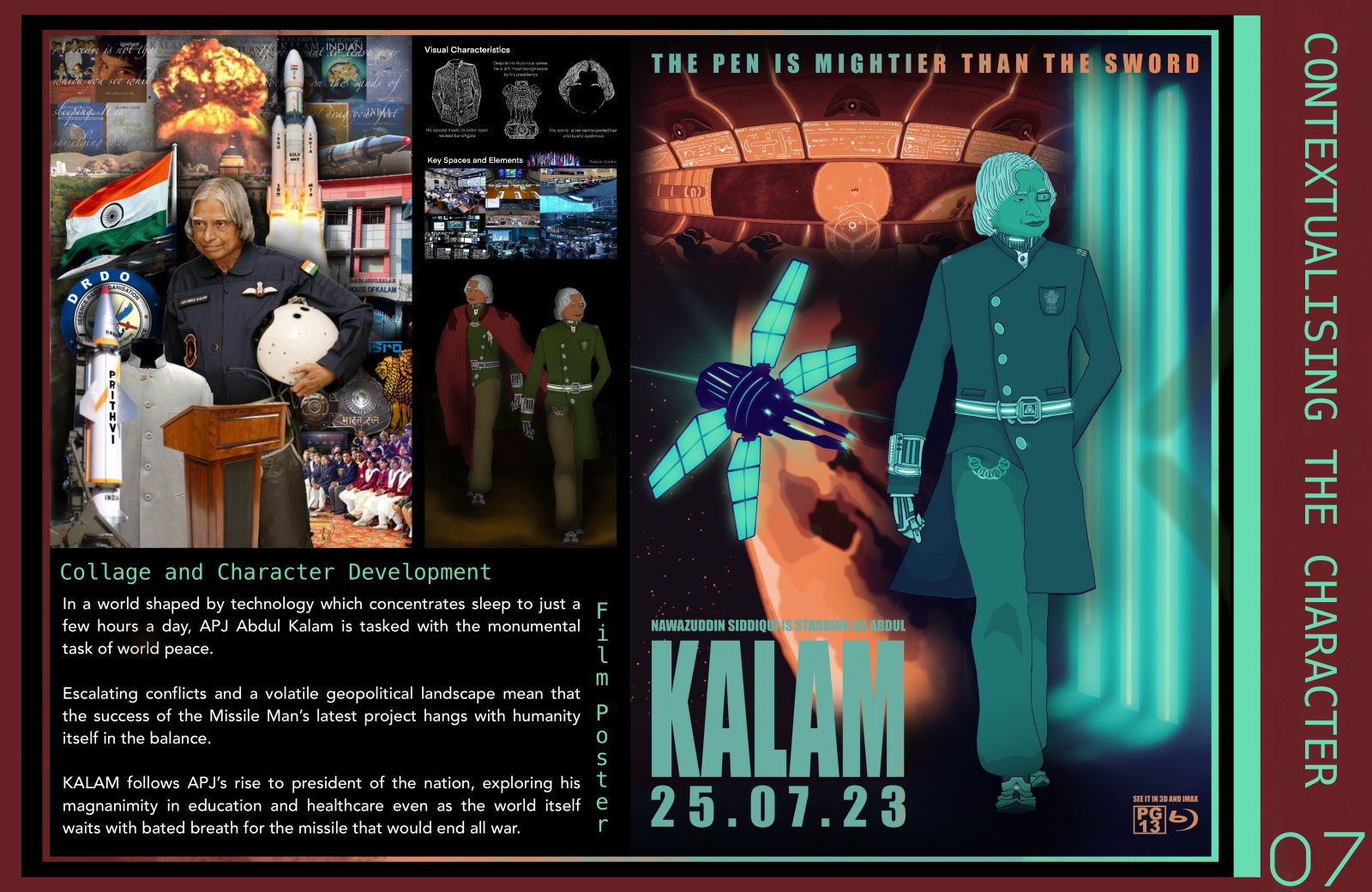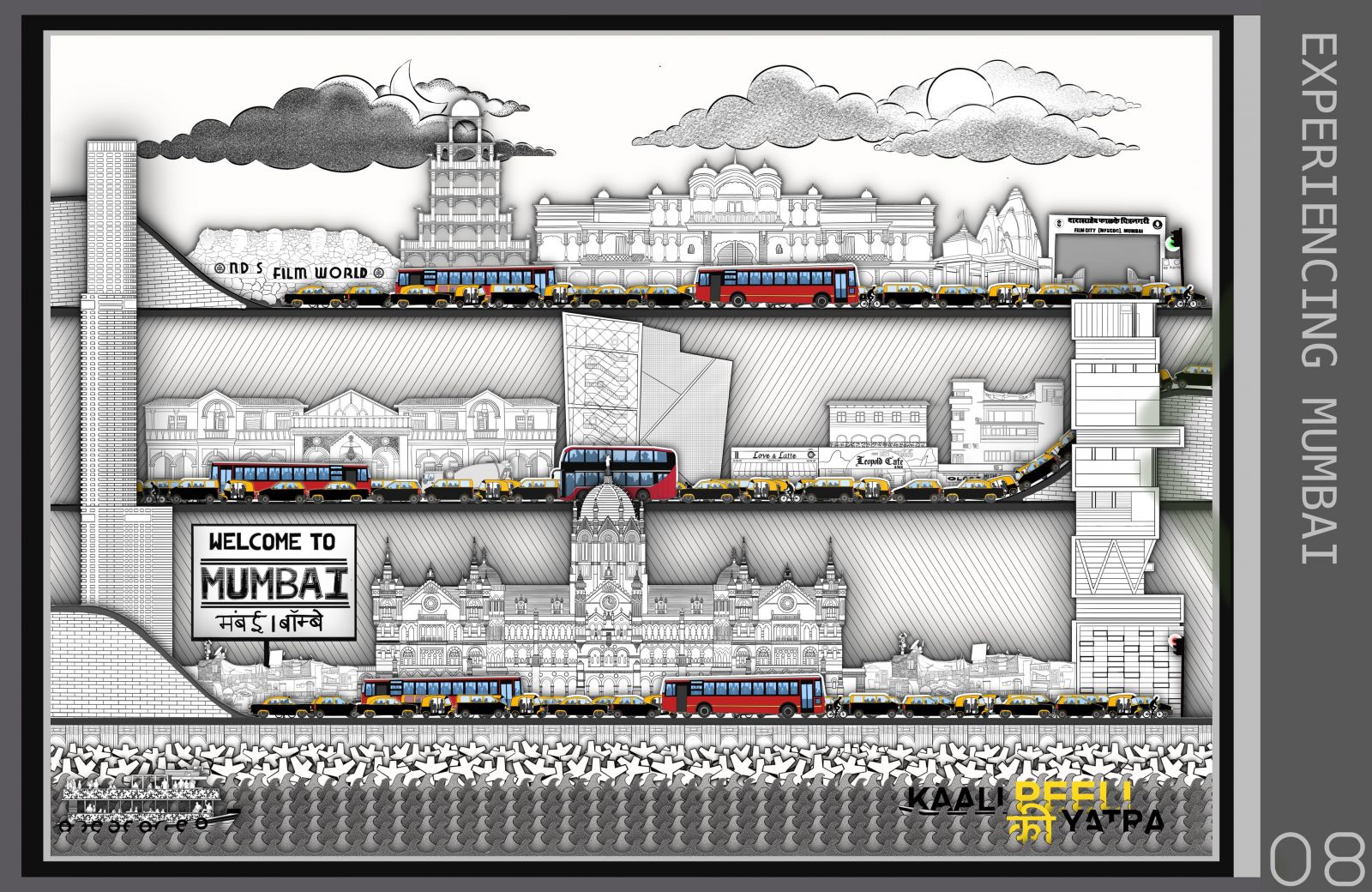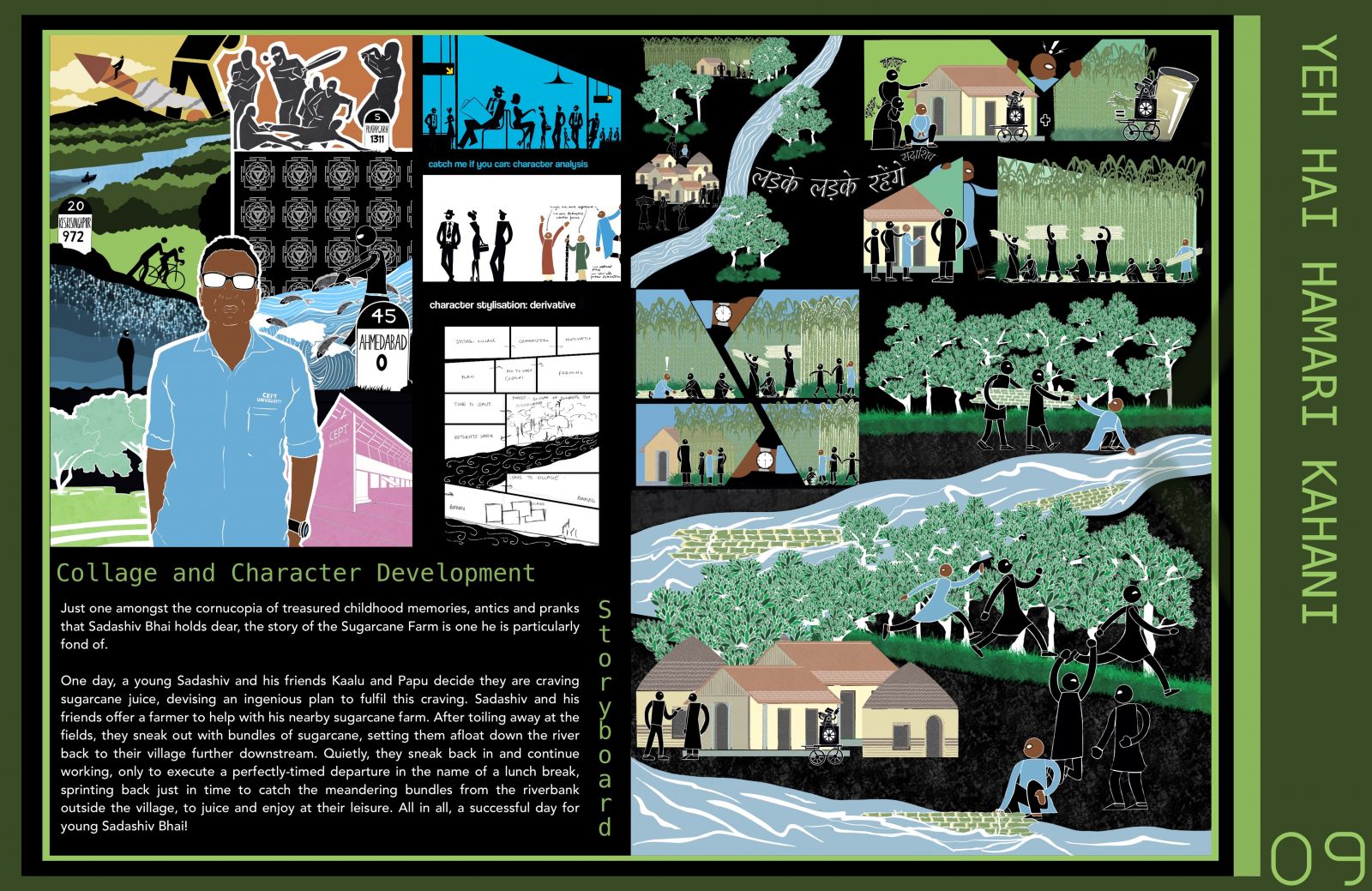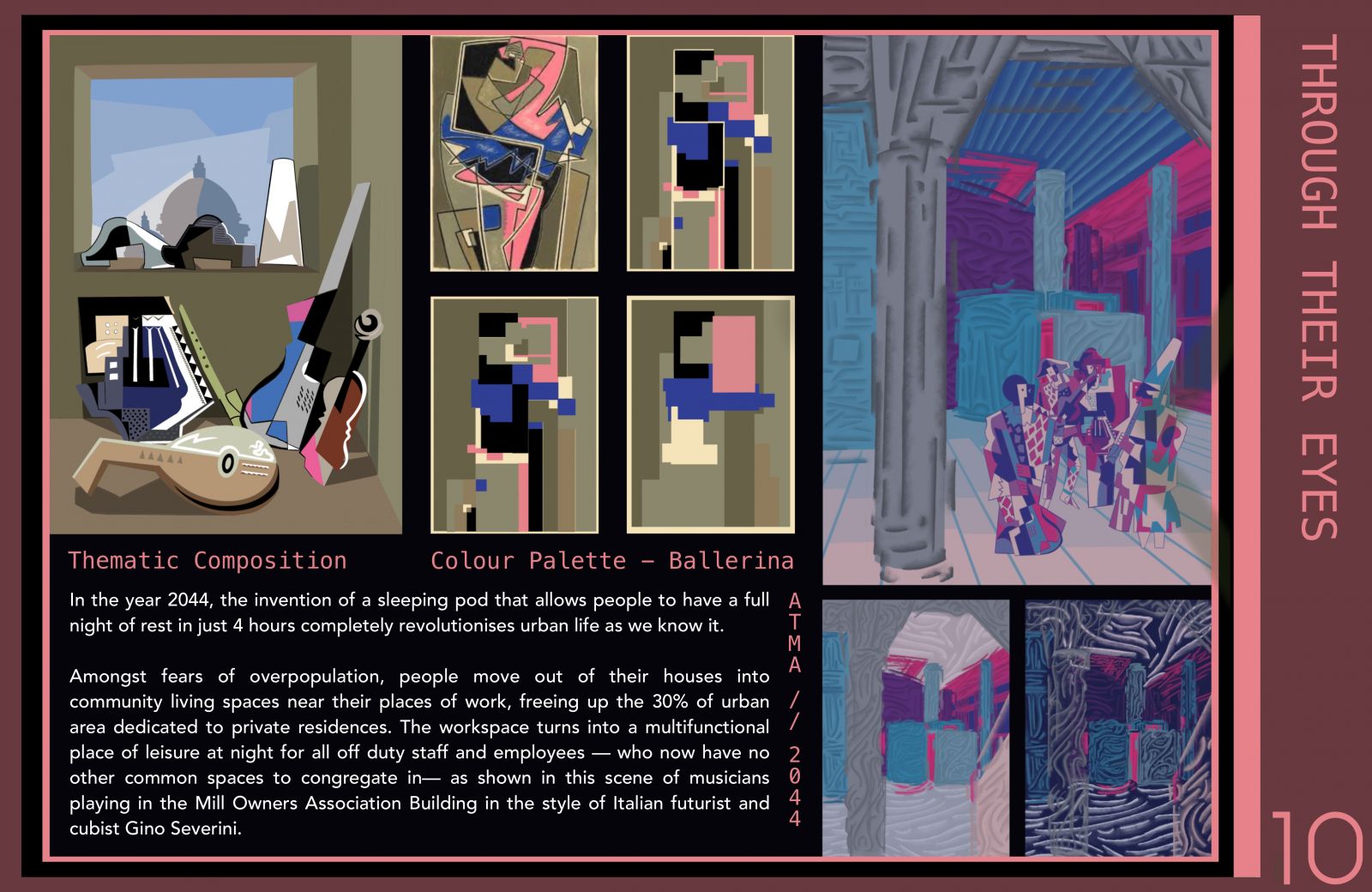Your browser is out-of-date!
For a richer surfing experience on our website, please update your browser. Update my browser now!
For a richer surfing experience on our website, please update your browser. Update my browser now!
What lies ahead? This constant fear of the unknown has plagued humanity for millennia. The best lens with which to view this uncertain and unforgiving future is oftentimes the tried and tested lens of history.
My personal vision of the future is inextricably linked with my aspirations and worldview -- in turn shaped by my present experience and past learnings: our trip to Mumbai, notions of the future from the works of Gino Severini; the interviewing of our ever-present and helpful CEPT Staff; and finally, our extrapolation of the future from western fiction of the present and Indian history

